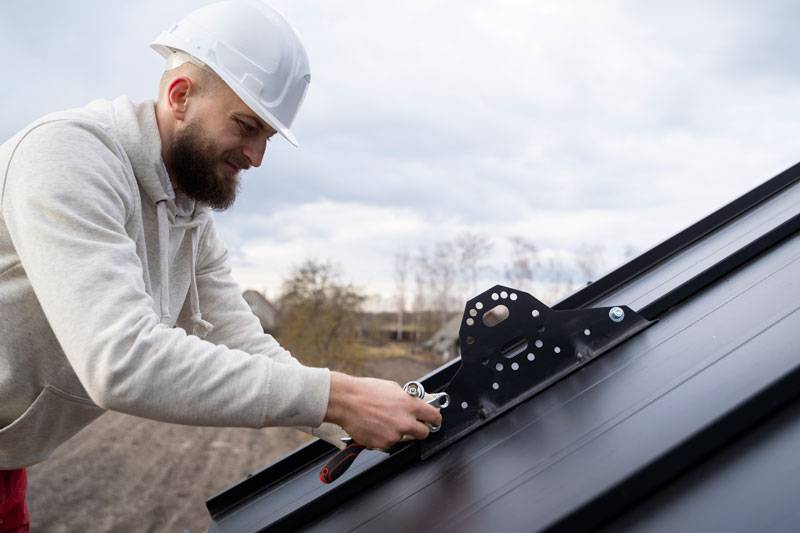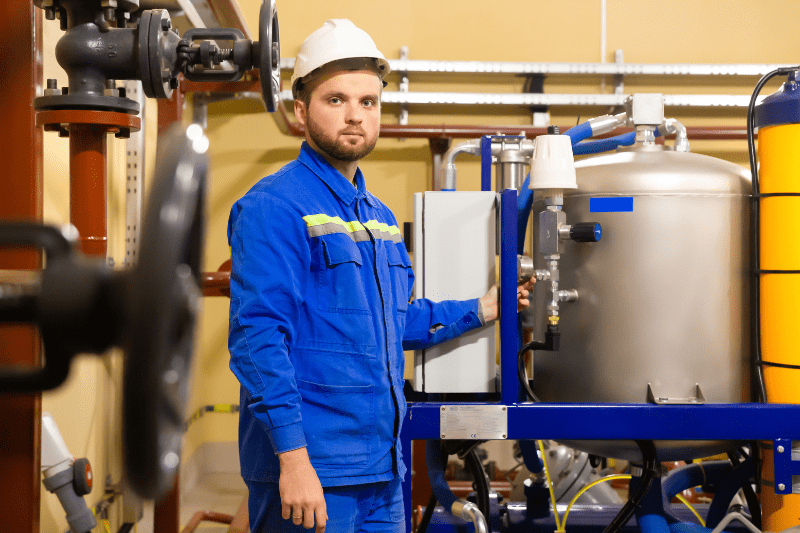Across Europe, factories and industrial plants are changing how they heat their buildings, tools, and materials. For many years, they relied on gas and oil systems. These worked well when fuel was cheap. But prices have jumped, and countries now want to cut pollution and stop depending on gas from other parts of the world. That’s why more companies are now switching to industrial heat pumps—machines that can provide heat using much less energy.
This shift isn’t simple. Heat pumps are large systems that need careful setup, regular inspections, and ongoing maintenance. When something breaks, it needs to be repaired fast so production doesn’t stop. That’s where Wello Solutions comes in. Wello helps workers plan and track everything—so the switch to heat pumps isn’t just possible, but manageable.
Here’s how heat pumps are changing the way European industry works, and how Wello is helping teams in the field stay one step ahead.
Why Industrial Companies Are Moving Away from Gas
Not long ago, most factories used gas boilers. They were common, familiar, and fuel was cheap. That changed quickly after gas prices spiked. The war in Ukraine made supply uncertain, and energy bills shot up across Europe. At the same time, European governments pushed businesses to use cleaner energy to meet climate targets. For companies using a lot of heat, staying with gas became too risky and expensive.
Heat pumps offered a better option. Instead of burning fuel, they move heat from one place to another—like from the ground, the air, or leftover heat from machines. And because they use electricity instead of gas or oil, they pollute less—especially when that electricity comes from solar, wind, or water power.
Factories now see heat pumps not just as good for the planet, but as a smart way to cut long-term costs.
What Makes Heat Pumps a Good Fit for Industry
Heat pumps aren’t new. They’ve been used in homes for years to heat and cool indoor air. But factories need much more heat, often for long hours and at higher temperatures. Until recently, heat pumps couldn’t keep up with those demands.
That’s changed. New models can reach higher temperatures, work with recycled heat, and handle large spaces. Some even reuse waste heat from the factory itself, using it to warm water or air for the same process. This makes them even more efficient.
One example is a brick factory in Austria. It replaced its gas system with a heat pump that now saves the company hundreds of thousands of euros a year. Other factories across Europe—making food, chemicals, or building materials—are doing the same. The savings are real, and the energy use is much lower.
Installing Heat Pumps the Right Way with Wello
Switching to heat pumps takes more than plugging in a new machine. These systems are large and complex. They need custom designs based on the size and needs of each site. Pipes, power lines, control panels, and safety systems must all be set up and tested. Installing one heat pump is already a big job. Many companies are installing them at multiple sites at once.
Wello helps keep everything on track. Teams use it to plan each step of the installation, assign jobs to the right workers, and record the work as it happens. Photos, part lists, and inspection notes are saved in one place. If someone needs to check what was done or find a setup guide, it’s all available instantly.
This saves time, reduces mistakes, and makes sure the job is done right the first time.
Keeping Systems in Check with Routine Inspections
Once a heat pump is installed, it needs to be checked regularly. These machines run day and night. Over time, parts wear down, sensors go off, or temperatures drift out of range. A small issue, if not caught early, can grow into a major breakdown.
Inspections help catch those issues. Technicians look for leaks, check filters, test controls, and make sure everything is running safely and efficiently. But inspections only work if they’re done consistently—and the results are properly recorded.
Wello makes this easy. Workers can pull up a checklist on their phone, walk through the inspection, take notes, and upload photos right from the field. If something looks off, they can flag it immediately. Managers can review all inspection reports anytime, spot recurring issues, and schedule follow-ups before problems get worse.
Maintenance Keeps Heat Pumps Efficient
Even when things seem fine, heat pumps need regular care. Maintenance helps them run at full power without wasting energy. This can include cleaning parts, checking coolant levels, tightening connections, and replacing worn pieces before they fail.
If maintenance is missed or delayed, it can hurt performance and lead to costly breakdowns. That’s why planning and timing are so important.
Wello allows teams to create a maintenance plan that works. Jobs can be scheduled ahead of time, with reminders sent to workers and managers. When a task is finished, it’s logged with notes and photos. If a technician notices something that needs attention later, they can add it directly into the system.
This keeps the whole team in the loop, avoids missed tasks, and helps companies get the most out of their investment.
When Repairs Are Needed, Fast Action Matters
Even with regular care, parts can break. A pump motor might fail, a sensor could stop working, or pipes may develop a leak. When this happens, production can stop—costing time and money.
Wello helps teams respond quickly. When something goes wrong, a repair job is created right away. The technician sees the full service history, past inspections, and part details. They know what’s been fixed before, what tools to bring, and what to expect.
Once the repair is done, the update is saved instantly. Everyone is notified, and the system is back online with no confusion or delay.
Over time, these records help identify which systems or parts cause the most trouble—giving companies the chance to improve their setup and reduce future problems.
Helping Workers in the Field Stay Focused
Working in a factory or out in the field is demanding. Technicians need to know where to go, what to do, and how to do it safely. They often deal with pressure to work fast while also doing a careful job.
Wello gives them the tools to do just that. Each worker sees their task list, job details, and safety steps on their phone. They don’t have to make calls to get updates or dig through binders to find instructions. Everything is right there in one place.
They can also add photos, fill out reports, and flag problems—all without returning to the office. This saves time, improves work quality, and makes the job smoother for everyone.










